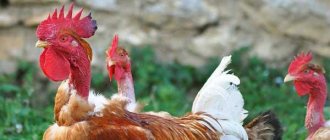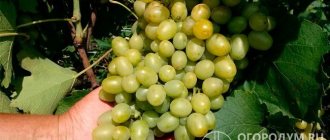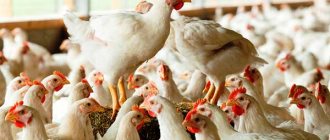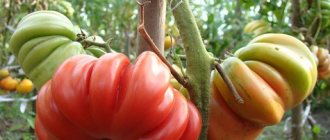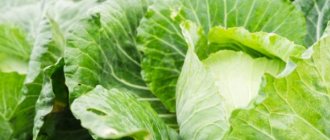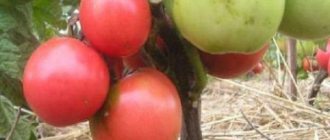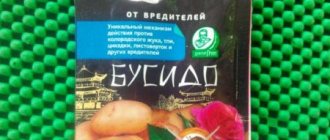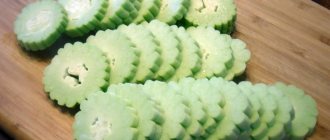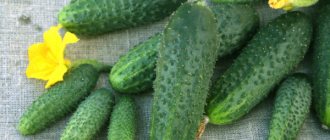- Feeding
Poultry farming at home is an excellent opportunity to raise for sale and provide your family with fresh dietary eggs and high-quality meat products. Many farmers today prefer Dominant chickens as one of the most productive egg-laying crosses (hybrids).
Dominants (pictured) are considered leaders among representatives of egg-bearing hybrids
Description of appearance and characteristics
The main task of breeding the Dominant cross was to create chickens with the following characteristics:
- early maturation;
- high egg production;
- delicious meat;
- disease resistance;
- good ability to adapt to any conditions.
The Czech Dominant was bred from chickens:
- Leghorn;
- Sussex;
- Rhode Island;
- Cornish;
- Plymouth Rock;
- Andalusian Blues;
- Maran;
- Araucana;
- mongrel chickens.
Depending on the variety, Dominant crosses differ greatly from each other. But they are not always similar to the parent breeds, as can be seen from the photo and description.
In addition to high productivity indicators, Dominant chickens share common external characteristics:
- dense, squat body;
- small head;
- strong strong legs;
- Roosters and laying hens have a comb;
- earrings are scarlet, differ in size and length depending on gender and variety;
- thick plumage;
- developed breasts (which is especially important for cockerels going for meat);
- the wings are pressed to the body;
- the tail sticks out;
- All varieties are autosex.
The latter means that the sex of Dominant chickens can be determined at an early age. The Czech breed is good because the cockerels do not need to be culled - they are used for meat. But young animals need to be separated by gender as early as possible - laying hens and poultry going to slaughter, as soon as they reach marketable weight, should receive different nutrition.
The most differences in the Dominant chicken breed are in the color of the plumage. Varieties can be:
- white;
- black;
- red;
- brown;
- plain;
- multi-colored;
- partridge;
- spotted.
When describing a breed, they always indicate what color eggs the chickens lay:
- brown;
- white or creamy;
- green;
- dark brown.
If properly maintained, a bird can live 7-10 years, although this makes no sense. Cockerels, in addition to producers, are slaughtered as soon as they reach marketable weight, chickens - at the age of over 2 years, when egg production decreases.
Every year, birds molt - they change feathers, which takes from 1 to 2 months. At this time, Dominant hens produce fewer eggs.
When properly kept, chickens have a calm and balanced character. The birds are quite active, the sounds they make are loud, and the instinct of self-preservation is well developed.
Some laying hens are even capable of hatching eggs - owners must ensure that the Dominant chicken does not turn into a hen.
But each variety has its own characteristics. According to reviews, crosses:
- D 300 – agile and timid;
- black D 109 and 149 are sociable, bold, and quickly turn tame;
- D 459 – very calm, willing to contact people.
Dominants have a well-developed hierarchy - when walking, chickens follow the rooster or hen (if there is one). You cannot keep one or 2-3 individuals at a time - this is a social bird, stress develops outside the flock.
Dominant chickens can be quite secretive - they begin to lay eggs in a hard-to-reach place, hidden from prying eyes. Therefore, owners do not always understand that the pullet is already producing eggs.
Temperament of dominants
Czech laying hens do not have a conflicting temperament. They normally coexist with other individuals in the yard, are moderately active, but cackle loudly. Poultry farmers believe that chickens do not tolerate changes in living conditions and other stressful situations, but this does not impair their productivity and growth rates.
The character of Dominants is calm and accommodating.
Birds feel comfortable with a walking yard, but if there is a shortage of space, they do not come into conflict with other poultry.
Varieties
Chickens of the Dominant breed are similar to each other not so much in appearance as in productivity characteristics. The colors of the varieties are especially different.
There are 3 lines:
- D – standard. These are the most common and sought after chickens that lay white, cream, and brown eggs.
- DS – Darkshell. The only variety that produces a dark brown shell.
- GS - Greenshell. A group of Dominants that lay green eggs.
From the standard line, the best for industrial cultivation are crosses D 229 and 102. The remaining varieties are recommended for home use and small farmers.
Red D853
The color of the plumage is uniform brick or red. Laying hens have a black spot on the tail, the back of the roosters is darker than the sides or belly, the productivity is 300 eggs with a brown shell.
Chickens at an early age are sorted as follows: feathers quickly appear on the wings of chickens, while males are still completely covered with down.
Brown (Brown)
Attractive crosses for home or industrial breeding. Egg production is high, meat is tasty.
D392 (Salmon)
The chickens are cream colored with brown wings and a black tail tip. The rooster is very beautiful, colorful:
- with golden neck and rump;
- red shoulders;
- mottled white and black belly and legs;
- coal tail with a greenish tint.
A laying hen produces more than 280 eggs per year with light brown, white or beige shells.
D102
The cross is used in industrial and domestic poultry farming. Brick chicken with dark neck and shoulders, white tip of the tail. It produces more than 310 eggs per year.
The rooster is white with an amber scruff and strands on the lower back; the back and upper part of the wings are dark brown.
D192
The dominant is intended mainly for home breeding. Similar to the previous variety, but the tails of roosters are completely black, while those of chickens are black at the end.
Egg production – 300 pieces per year.
Tinted D723
One of the best egg-laying breeds, a record of 338 cream eggs per year was recorded. This Dominant easily adapts to different growing conditions and feeds.
Birds are white, roosters have cream markings on the neck, wings, and back.
Tiger D959
A real black and white hen. Males have uneven coloring, with more light feathers on the neck and tip of the tail. The breed produces 310 eggs per year.
Partridge D300
Dominants with beautiful brown plumage. The chickens are dark, with golden strands on the neck. The rooster is lighter, more richly colored - with a dark green tail, belly, chest and wings.
Eggs range from creamy to creamy, laying more than 280 eggs per year.
Tricolor D301
Brown chickens with white spots resemble partridges. Roosters have amber, red, and black feathers.
Laying hens produce 280 light-shelled eggs per year.
Sussex
Represented by Dominants of two similar varieties:
- D104 resembles the parent Sussex breed - white chickens with black tails and the same color feathers on the neck and wings. Egg production is more than 300 eggs per year.
- D304 is based on Leghorns. Very similar to the previous variety, but the comb droops slightly and there are fewer black feathers. Productivity – from 260 pieces.
Blue (Light Blue)
Two more similar varieties. Chickens produce 290-300 eggs with brown shells. Young roosters are always kept because of their tasty meat.
D107
Laying hens are ashy with a dark neck and have shown high productivity when kept in cages. Roosters are the same color with an almost black tiger pattern on the upper body and tail.
D187
The birds are similar to the previous Dominant variety, but the plumage is actually bluish, and not just ashy. Chickens have a darker neck compared to D107.
Red striped (brindle)
Three types of Dominants have this coloration. All produce brown eggs, 305 per year. At 4 months they reach a weight of about 1.5 kg.
The sex of chickens is determined by the feathers on their wings - they are longer in hens.
D159
Brown-red Dominants of cuckoo (variegated) colors. Laying hens have a black spot on their tail; males have a darker back.
D459
The rooster is white, with motley ash strands around the throat, charcoal feathering on the tips of the wings and tail. Very similar to the Sussexes, the main difference is the rare beige tan markings. The chicken is white and cream with a light brown neck and a black spot at the tip of the tail.
D902
New Dominant, on sale from 2022. Laying hens are similar to D459, only lighter. The rooster is white, with cream strands on the neck and brick strands in the area of the wings.
Black Dominant
Popular group, gives brown eggs. The chickens are similar, although they have some differences; it is impossible to confuse the males.
D189
A cross created by special order of business partners of the Dominant company from Mexico, who wanted to get roosters of pure black color. The order was completed, but the males have sparse brown streaks on their necks. The meat is tasty, egg production is 290-300 pieces per year.
D109
Black and green Dominant chickens have red streaks around their throats. Roosters are motley (tiger), coal-white, with brown feathers in the chest, neck, and wings. Egg production – from 310 pieces.
D149
Laying hens are black with sparse white streaks in the front of the body. Males are the same color, but have a yellowish-white “cape” on the head, neck, shoulders, back, and wings. Productivity – 300 eggs per year.
Amber D843
Cross Dominant with an attractive appearance. Egg production is the same as the previous variety.
Chickens are creamy white with brown spots, roosters have amber necks and strands on the lower back, the upper part of the wings is dark brown, almost black.
Dominant Leghorn D229
The only completely white variety, in appearance it resembles the original breed of chickens, the name of which is reflected in the name Dominant. Requires little feed, produces up to 320 eggs per year. Recommended for industrial and home breeding.
Darkshell Dominant DS109
The cross produces dark brown shells and 250 to 270 eggs per year, which is higher than the average for egg-laying chicken breeds.
Modification D109, differences:
- birds' legs are partially feathered;
- the hen is completely black;
- The rooster's locks are not white, but brown.
Dominant Greenshell GS
New (2020) crosses, no names, only a numerical code, obtained by crossing Araucans with standard Dominants. The varieties have not yet been brought to uniformity. Egg colors are:
- blue;
- turquoise green;
- dark olive.
From 10 to 15% of birds produce eggs with a standard shell color. Laying hens are characterized by a tuft on the back of the head, but not everyone has it, but 70-80% of hens have it.
Now there are 7 varieties with a clutch of 240-260 eggs weighing 57-59 g:
- GS959 – it is immediately clear that the hens are descended from Tiger Dominants, the cockerels are darker;
- GS902 – golden and salmon striped color on a white background;
- GS459 – the back of the hens is ashen, the front is motley, cream, the roosters are black and white;
- GS300 – similar to Partridge Dominants, only lighter;
- GS229 – white hens, males with cream markings, combs hanging over the nose;
- GS159 – red tiger birds;
- GS107 – ash blue, cockerels have black speckles.
Reviews
Many farmers speak positively about the breed.
We purchased blue dominant eggs and incubated almost all of them. They started laying eggs in the fifth month. There were a lot of eggs, very high quality
Anna, poultry farmer, Ukraine
We bought dominant chickens that were already adults for egg production. We keep them in cages. I want to say that if you feed them well and correctly, the eggs lay properly, but the weight of the chickens themselves is small - about 1.5 kg
Irina, farmer, Leningrad region.
I've had dominants for three years now. The chickens are very calm, docile, and large. I keep them free-range, they lay a lot of eggs, the family is very happy with the quantity and taste. We plan to use even more of them in the future.
Oleg, farmer, Smolensk region.
Productivity
Dominant chickens begin to lay eggs at 4-6 months. Standard varieties produce an average of 280-310 eggs per year. The record holders are the following crosses:
- D723 (Tinted), which showed a productivity of 338 pieces;
- D229 (Dominant Leghorn) – 320 eggs.
Chickens that produce eggs with exotic colored shells lay worse:
- DS (Darkshell) – 250-270, dark brown;
- GS (Greenshell) – 240-260, green.
According to reviews, Dominant standard laying hens immediately produce large eggs, the weight of which quickly reaches 62-63 g. Those with colored shells are smaller - from 57 g. This is the first category.
Chickens reach peak egg production and an increase in average egg weight to 65-70 g at one and a half years, which corresponds to the following categories:
- O – selected (65-74.9 g);
- B – highest (75-80 g).
After two years of age, the productivity of Dominants constantly decreases; the herd needs to be renewed.
The cross is remarkable in that the cockerels are not culled. It is necessary to leave a few of the best males, keep them together with laying hens, the rest should be separated, given food for meat breeds, to be sent to slaughter starting from 18 weeks. At this time, the mass of the bird reaches:
- chickens – 1.3-1.6 kg;
- cockerels - 1.6-2.3 kg.
In adults, the weight increases to 1.9-2.4 and 2.8 kg, respectively. It makes no sense to keep cockerels or hens that have stopped laying eggs any longer - the food is consumed and the weight practically does not increase.
Origin
The dominant is a relatively young breed. Its selection began in Czechoslovakia at the beginning of the 20th century, and by the middle of the century the first dominants were bred. Selection work is still ongoing, but these birds have already gained worldwide attention. Such breeds of chickens as Rhode Island, Sussex, Plymouth Rock, New Hampshire and Leghorn participated in the formation of dominants. Since the dominant is an egg breed, selection is aimed at increasing the weight of eggs and the possibility of separating chickens by sex at the earliest possible age.
Advantages, disadvantages
All lines of Dominant chickens are promising crosses. Greenshell GS has not yet been perfected, but it is a matter of time - they were launched in 2020:
- 20-30% of laying hens without crests;
- 10-15% of chickens produce eggs with shells of normal color.
Advantages of Dominants:
- high productivity - 280-300 eggs on average per year;
- autosexness of the breed - from an early age, chickens can be easily separated by sex;
- chickens are suitable for home and industrial breeding;
- fast growth;
- There is no need to cull cockerels - they produce excellent meat;
- early puberty – 4-6 months;
- large eggs;
- safety of chickens – 95-97%;
- calm character;
- chickens eat little;
- good adaptability;
- high immunity;
- birds tolerate a short-term drop in temperature in the chicken coop to -5° C, and on the run - about 15° C;
- When molting, laying hens only reduce productivity, but continue to produce eggs.
Whether the high fertility of eggs (about 90%) can be considered among the advantages of Dominants is a controversial issue. This is a cross, the bred chickens do not inherit the characteristics of the breed.
Disadvantages of Dominants:
- the composition of the feed affects the size and number of eggs, although birds will eat anything;
- improper nutrition can delay the start of laying for up to 3 months;
- pecking begins in a cramped room;
- secretiveness of the breed - if there is not enough roosting, the chickens hide when laying eggs;
- impossibility of independent breeding;
- after a maximum of 2 years the herd must be changed;
- the brooding instinct in laying hens is not completely removed;
- high cost of hatching eggs and day-old chicks.
Hatching instinct
Both professional breeders and beginning farmers without experience and equipped chicken coops can breed dominant breed chickens. However, hens have a weakly expressed maternal instinct, so they often leave the nest and do not warm the eggs until the chicks hatch. If you don’t have an incubator, it’s better to buy chickens from trusted breeders.
The brooding instinct is the behavioral tendency to sit on a clutch of eggs.
Since the dominant is a cross of several breeds, parental productivity is not transferred to the chickens.
Content Features
Poor conditions reduce the productivity and quality of Dominant eggs.
If the hen starts clucking, it means she is going to stop laying eggs and sit on her eggs. To prevent this, the birds are transferred to a neighboring flock for several days. When this is not possible, another stress is applied - she will not lay eggs for 2-3 days, then egg production will be restored, but the manifestations of the brooding instinct will cease.
If Dominant chickens are allowed to walk, they need free access from the poultry house to the street.
The height of the fence should be at least 180 cm, especially when there is an active rooster in the flock. Otherwise, the birds may fly over the fence, begin to rule the yard, and destroy the garden.
Planting area
When kept in close quarters, young laying hens look for secluded corners to begin laying. There should be at least 1 nest for 4-5 chickens.
Maximum planting density recommended by Dominant CZ.
| Age, weeks | Heads per 1 sq. m |
| 0-1 | 60 |
| 1-4 | 25 |
| 5-10 | 12 |
| 11-18 | 9 |
| 19-78 | 5-7 |
Temperature
Despite the high vitality of Dominant crosses and the fact that chickens can withstand a short-term drop in temperature to -5 ° C without the death of the flock, it must be warm in the poultry house. Chicks need 32-34° C for the first 7 days in the brooder. On days 7-14 it is lowered to 27-31° C.
By the 18th week, the temperature is brought to 20° C, gradually decreasing by 2° C. The optimal indicator for masonry is 18-20° C.
If the house stays at 15°C for a long time, Dominant chickens lay eggs worse and consume more feed so that they have somewhere to get energy to maintain body temperature.
Light mode
Without good lighting it is impossible to achieve maximum masonry:
- For the first 2 weeks, the chicks in the brooder are kept lit 24 hours a day;
- so that Dominant chickens begin to lay eggs faster, at 20-26 weeks the light is turned on for 14-16 hours;
- an adult herd needs a 13-14 hour day.
Humidity and ventilation
Optimal humidity according to data posted on the official website of the Dominant CZ company:
- unfledged chickens – 50%;
- subsequent period – 40%.
A range of 40-60% is considered acceptable.
Good air exchange is of great importance:
- eliminates dampness;
- reduces the likelihood of bacteria development;
- regulates temperature;
- saturates the poultry house with oxygen;
- helps remove ammonia vapors and other unpleasant odors.
Ventilation should be regular, without drafts. It is necessary that Dominant chickens receive 1-6 cubic meters. m of fresh air per hour per 1 kg of live weight.
Litter
In a poultry house, bedding is needed to absorb moisture and excrement and prevent paws from coming into contact with the cold floor. In addition, it is partially pecked by chickens.
Recommended materials:
- straw;
- peat;
- sand;
- hay;
- Coniferous sawdust - deciduous sawdust, when pecking, can injure the throat or goiter.
A complete replacement of the litter is carried out at least once every 3-4 months, adding fresh material every 2 weeks. The depth needed is 8-20 cm; the less often the cleaning is done, the thicker the layer.
How to care for chickens
Experienced poultry farmers recommend feeding chickens with chloramphenicol in the proportions of 1 tablet per 1 liter of liquid for the first three days after purchase, and also adding the drug ASD 1:3. In this way, you can strengthen the immune system of the chicks, thereby increasing the survival rate. At the end of the course, ascorbic acid and vitamin D are mixed into the water.
Keeping chickens.
Before purchasing chickens, you need to prepare an aviary for their maintenance. It is treated with disinfectants, after which the floor is covered with sawdust and peat, and feeders with a drinking bowl are placed above the wall.
At the time of reaching two weeks of age, the light regime is reduced to 8 hours. But at this moment, calcium and all vitamins should always be present in the chicks’ food. Poultry farmers add fish oil, resin and feather ash to the feeders; these components are enough to enrich the body.
If a weak or emaciated chicken is detected, it must be placed in a separate cage. Perhaps the bird is sick, and this method will eliminate the possibility of infection of the entire flock.
Two videos: Czech Dominant chickens - how to care for them?
Friends! Share useful material with your friends and like-minded people on social networks. And subscribe to updates on our portal to be among the first to read the latest chicken news.
Good luck and success to you, see you!
Did you like our tips? Share with friends on social media. networks!
Feeding
Young animals must receive complete specialized feed:
- laying hens – for egg breeds;
- Cockerels fattened for slaughter need chicken feed for meat purposes.
An adult bird can be completely switched to mash, but it is better to feed it in the interval between two portions of feed - at 8-00 and 16-00. The daily consumption of mature laying hens or roosters of the Dominant combined feed ranges from 105 to 125 g per day.
It is necessary to place containers with chalk, limestone, and shell rock in the chicken coop.
The diet of Dominants should always include:
- at least 50-60% grains, mainly wheat, corn, millet;
- boiled vegetables;
- fruit waste;
- fresh herbs;
- meat and bone or fish meal;
- fat;
- premixes;
- protein-vitamin-mineral concentrates.
For Dominant chickens, an important addition is fresh or dry nettle. For the winter, greens are dried, chopped, and stored in bags.
Mash can be prepared with water, meat or vegetable broth, or whey.
If the Dominants are malnourished, egg production decreases. When overfeeding, chickens become fat and lay eggs worse. When the temperature drops to 15° C or less, the diet is increased - to maintain warmth, birds need more energy, which they can only get from food.
There should always be clean water in the chicken coop, which is changed at least once a day. It is better to place drinking bowls and feeders on opposite sides of the room.
Where can I buy
For Russia, this breed is quite new, but on its territory there are already a number of breeders selling this highly productive bird. For example, they can be found in the Leningrad and Yaroslavl regions. You can also buy poultry in Poland and Ukraine, where there are representative offices of the Czech manufacturer. Considering that this breed tolerates transportation well, purchasing one will not be difficult.
Price
As for the cost, it is at an average level. Young laying hens are sold at a price of 320 rubles, and hatching eggs - from 8 rubles apiece.
Breeding at home
If there is a good rooster in the Dominant herd, the fertilization rate of eggs reaches 90%. But this is a cross, the young animals will not be similar to their parents in appearance or productivity. You need to buy material for incubation, or take day-old chicks, the safety of which, if properly kept, is 95-97%.
When placing eggs in the incubator, you should prepare them correctly and strictly follow the instructions. If a hen is involved in breeding, you need to choose a quiet, warm place for incubation, inaccessible to other hens.
Breeding history
The bird is of Czech origin, because all the work took place on the territory of this country. Thanks to the efforts of the breeder Zdenek Selma, in the 90s of the 20th century, an egg-oriented cross appeared, which was called the “dominant”. This is due to the fact that no other known breed had such productive qualities, a good immune system, and excellent adaptation to living conditions.
Today, there is ongoing debate among poultry farmers about whether dominants belong to a separate breed or are considered a cross.
recommended articles:
The appearance of the birds is very diverse, and they are also similar to various existing breeds that were used for selection. Dominants are popular not only in industrial breeding, but also in small households. These birds were brought to Russia not so long ago, but they have already become everyone’s favorites.
Disease Prevention
The poultry house must be kept dry and clean, and the litter must be changed regularly. If this is not possible, mix the material with lime, which prevents the spread of pathogenic microorganisms. Crowding of birds or drafts should not be allowed.
Disinfection should be carried out at least once a year, preferably every 6 months.
Dominants are a cross of chickens characterized by good health. But to improve immunity, it is useful to introduce chopped nettle into the diet from an early age - fresh or dry, depending on the season.
If the Dominants do not eat compound feed, or the owners have chosen a “light” inexpensive option without premixes, vitamins, minerals and other additives, they must be given separately. In order for the shell to be strong, the diet must contain sources of calcium:
- shell rock;
- slaked lime;
- chalk;
- limestone.
To better digest food, chickens need small pebbles, which they find and peck on their own while walking.
Vaccination is mandatory on large farms. Small ones do it at their own discretion:
- if the chickens have not been sick before, this is acceptable;
- when in previous years the owners experienced loss of herd due to infections, vaccination is necessary.
Illness or unusual behavior of chickens is a reason to call a veterinarian. You cannot self-medicate - if the infection is identified incorrectly, the bird’s immunity will decrease and treatment will be more difficult. And an incorrectly used antibiotic may not work when you really need it.
Legbar is a bird that can lay blue and blue eggs
Legbars have a rather funny appearance. They have a lush and round body, due to which they look like cute buns. Individuals move on short, non-false limbs. Despite this, laying hens still retain their royal charm.
In addition, they have a small, lush crest on their heads. He also has a red comb and red earrings. The hen weighs up to 3 kg, and the male weighs up to 3.6 kg. The feathers of the individual are thick, lush and dense.
Chickens have a straight back, which has a smooth transition into the tail. The color of the fluffy outfit can be of two types - creamy-golden and ash-silver.
Females are distinguished by early maturity. They also owe this to their ancestors. Egg laying begins at 4-6 months. Full maturity occurs at 10-12 months. But this breed has one significant disadvantage - it is prone to obesity. This leads to delayed puberty. So you won’t be able to get large blue testicles at first. You will need to wait a couple of months until the hen begins to actively move and eat properly. Her first eggs weigh 40 g, and then this value increases to 75 g.
Find out why they don’t lay eggs and what to do about it using the provided link.
Puberty
Early birds have always been valued by farmers because they are less expensive to maintain. Therefore, scientists have always sought to breed varieties with a tendency to early egg-laying. The Dominant breed of chickens, the description of which suggests that it begins laying at approximately the age of 5-6 months. But the growth process does not end there - the herd will gain weight for up to 11 months, sometimes longer.
Some hens do not mature as quickly, and may lay eggs closer to 7 months. But, according to reviews from farmers, such birds will remain productive longer, which is also an advantage.
Video
This video will tell you about the features of caring for Legbar chickens.
Today every farmer can have blue eggs. This eliminates the need to paint them. If you purchase one of the above breeds of chickens, you will be guaranteed blue or olive colored testicles. But the high productivity of these individuals is achieved only with proper care. Photos of the dominant breed can be found at the link.
The “Dominant” line includes the dominant red striped D 459, speckled D 959, GS 300 with a blue egg and many other varieties. These are crosses that were developed by crossing several highly productive chicken breeds. Each of them has its own indicators of mass and egg production. In this article we will talk about dominant chickens GS 459. They have become famous due to their unpretentiousness to living conditions and high productivity.
How to insert glass into a new door leaf
Modern doors from different manufacturers can vary greatly in design (see Interior door design). Therefore, the glass fastening in them is not the same. Some have a groove in the upper end covered with a decorative strip, into which the glass is lowered. But this is only if it is solid and large in size.
More often, interior doors that do not have a baguette frame for attaching glass inserts have a collapsible design.
If you have chosen a canvas without glass or want to replace the existing one with something more suitable for your interior, then again you will need:
- Make a pattern along the light opening and add around the entire perimeter the depth of the grooves into which the glass should go.
Important! When cutting out a glass insert, make it 2-3 mm smaller than the obtained dimensions to leave room for silicone
- To insert glass, disassemble part of the canvas. unscrewing the tightening bolts. Sometimes it is necessary to remove the mullions or post harness.
- Lay the canvas on the floor or table and fill the grooves pointwise with silicone.
- Install the glass, let the silicone set and then reinstall all the removed parts in reverse order.
To avoid damage to the glass, glazing should be carried out after cutting in and installing door hardware.
Trees
If there is no way to drain groundwater in a wetland, then trees will come to the rescue, helping not only to drain the area, but also to decorate it.
Poplar
The most popular tree in Russia, with which you can drain swampy areas and strengthen the coastline, fortunately the poplar grows very quickly. But recently, this tree has been abandoned en masse due to the fluff that allergy sufferers suffer from.
In addition, during strong winds, fragile branches cannot withstand and often fall on cars and people. Those who are not allergic to fluff choose pyramidal poplar for their large summer cottage.
Fluffy birch
A real symbol of Russia, which can be found at every step. To get rid of flooding in the summer, it is enough to plant a birch tree on the site, which will not only cope with this task, but will also become an excellent decoration for the clearing.
It easily withstands not only strong winds, but also Russian frosts. Before planting a birch seedling in a flooded area, you need to dig a hole about 80 cm deep, then fill it 50 cm with large stones, which will be good support for the roots.
Red maple
This very beautiful tree is planted not only to drain the flooded area, but also for its beauty, thanks to its red or golden leaves. The trees themselves reach a height of up to 10 meters, so they need to be planted in large summer cottages.
Before planting, you need to fill the hole halfway with sand, crushed stone and construction waste, which will help the maple roots to strengthen.
Then the seedling is carefully planted in the planting hole and filled with soil mixed with mineral fertilizer.
Damsons
For draining a summer cottage, damson plums are perfect, as they will not only cope with draining the soil, but will also produce tasty fruits. You can choose any variety that suits the climate of your area. You just need to remember that damsons are planted no closer than three meters from each other.
Damson is a very unpretentious plant, practically does not get sick and does not suffer from pests, the fruits are very tasty, large, which can not only be consumed raw, but also made into compotes and jam. As a last resort, the damson can be replaced with cherry plum, which also drains the area quite well.
Weeping willow
The willow is called weeping because of the special shape of the crown, which descends to the ground itself, creating the impression of sadness. This is the most moisture-loving tree that grows well along the banks of rivers and lakes. In warm climates, they can grow up to fifteen meters in height, and in cold climates, dwarf willows most often grow, creeping along the ground.
Willow can be planted at any time from spring to autumn, the main thing is to do it before the first frost. To form a willow crown, it is pruned at the beginning of summer and only after flowering.
